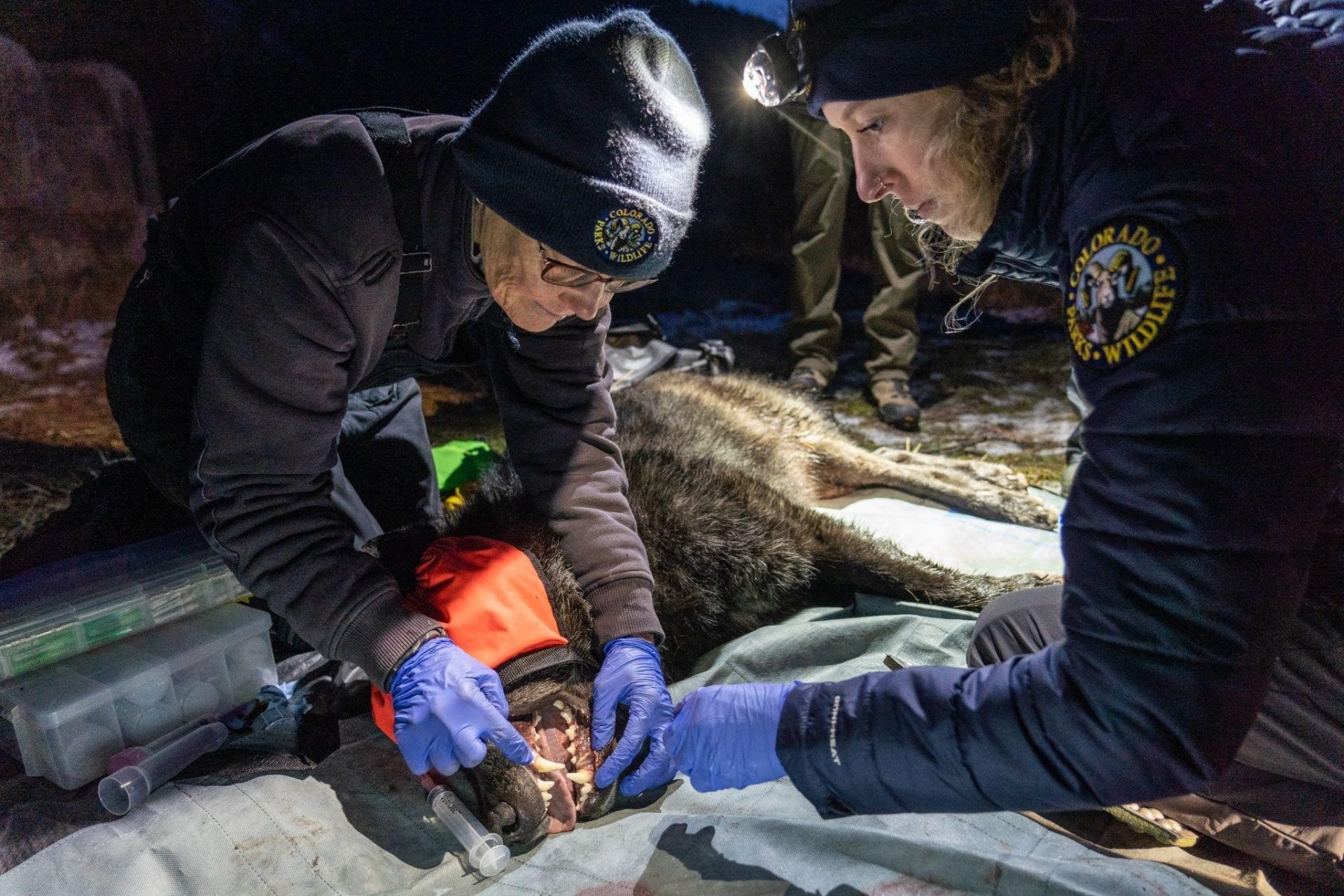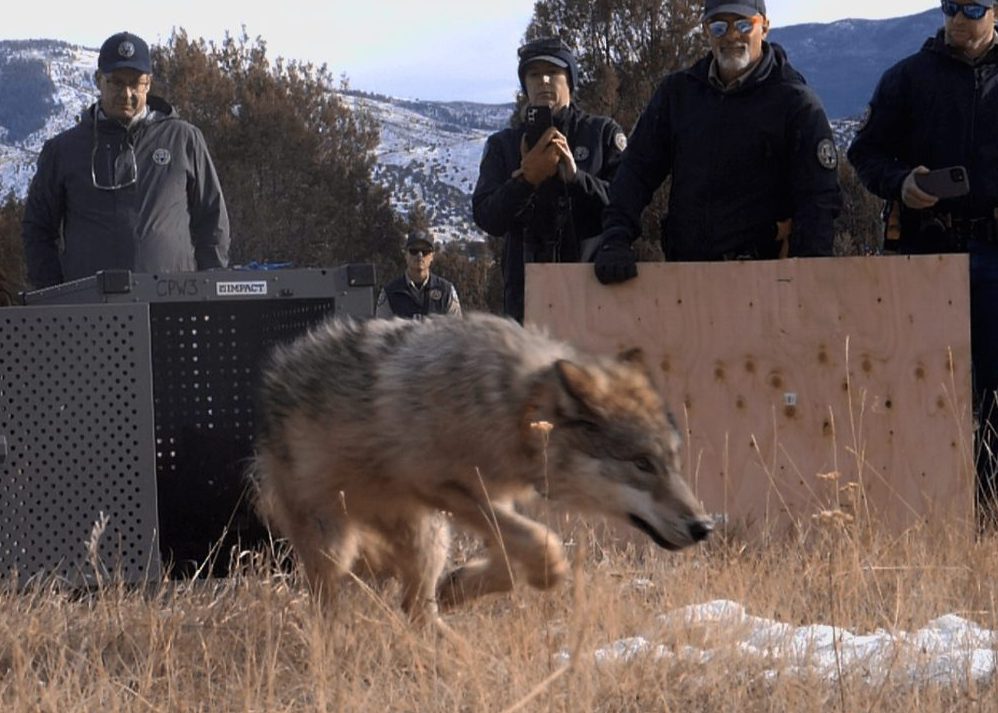
This week, Colorado Parks and Wildlife (CPW) released a press release announcing that one of the 10 reintroduced wolves in Grand County, Colorado, has died. The 10 wolves reintroduced in Grand County were part of Proposition 114 (State Statute 33-2-105.8) which instructed the CPW Commission to reintroduce gray wolves to Colorado by December 31, 2023.
CPW has identified the wolf as 2307-OR, an adult male of gray color. CPW was made aware of the wolf’s death on September 9 when a mortality signal was received from the GPS collar. CPW staff was deployed to confirm the death on September 10. “As a federally listed species under the Endangered Species Act, we are in direct consultation with the U.S. Fish and Wildlife Service about next steps,” CPW said in the press release.
While CPW did not share further information, human interference can be excluded since CPW Director Jeff Davis referred to the death in the press release as an “anticipated mortality” which is “expected both during restoration efforts and on an ongoing basis.” It can be assumed that 2307-OR died either from injuries sustained from other animals, disease, or malnutrition. Wolves who do not join a pack typically die within a year.
Meanwhile, CPW has reached an agreement with British Columbia, Canada, for the capture and release of an additional 10-15 gray wolves for this season. The wolves will be captured and relocated to Colorado between December 2024 and March 2025. CPW hopes to release 30 to 50 wolves over the next 3 – 5 years using wolves captured from nearby northern Rockies states from several different packs by trapping and darting them in the winter. The plan is to recover and maintain a viable, self-sustaining wolf population in Colorado while balancing the need to manage interactions between wolves, people, and livestock.

Gray wolves are listed both state and federally as an endangered species in Colorado by the U.S. Fish and Wildlife Service (‘USFWS’). USFWS has designated the Colorado wolf population as Experimental under Section 10(j) of the Endangered Species Act. This provides management flexibility that would otherwise be prohibited. CPW’s reintroduction program builds on work started by the USFWS in 1995 when that federal agency began restoring gray wolves in the Western U.S., starting with an experimental population released in Yellowstone National Park in Montana. Wolf reintroduction efforts eventually spread to Wyoming, Idaho, New Mexico, and Arizona.
Wolves have been re-introduced across the world with great success. In Switzerland, wolves were reintroduced more than 10 years ago. There were less than 100 wolves as recently as 2019, but by 2023 numbers ballooned to more than 300 wolves across 32 different packs. Attacks on livestock, such as sheep and cattle, increased by more than five-fold in Switzerland and farmers called for changes in laws to allow for the pre-emptive shooting of wolves. An improvement in herd protection through the use of special cattle dogs has resulted in a decrease in attacks on livestock by 71% this year.
